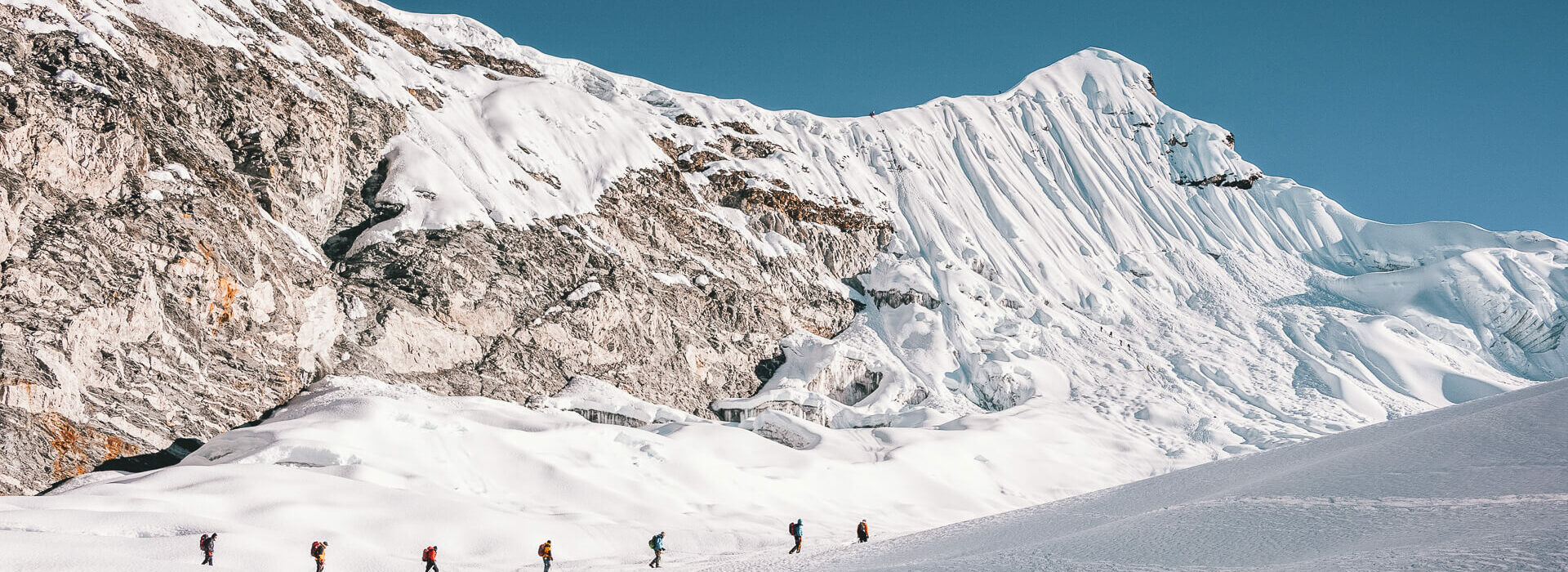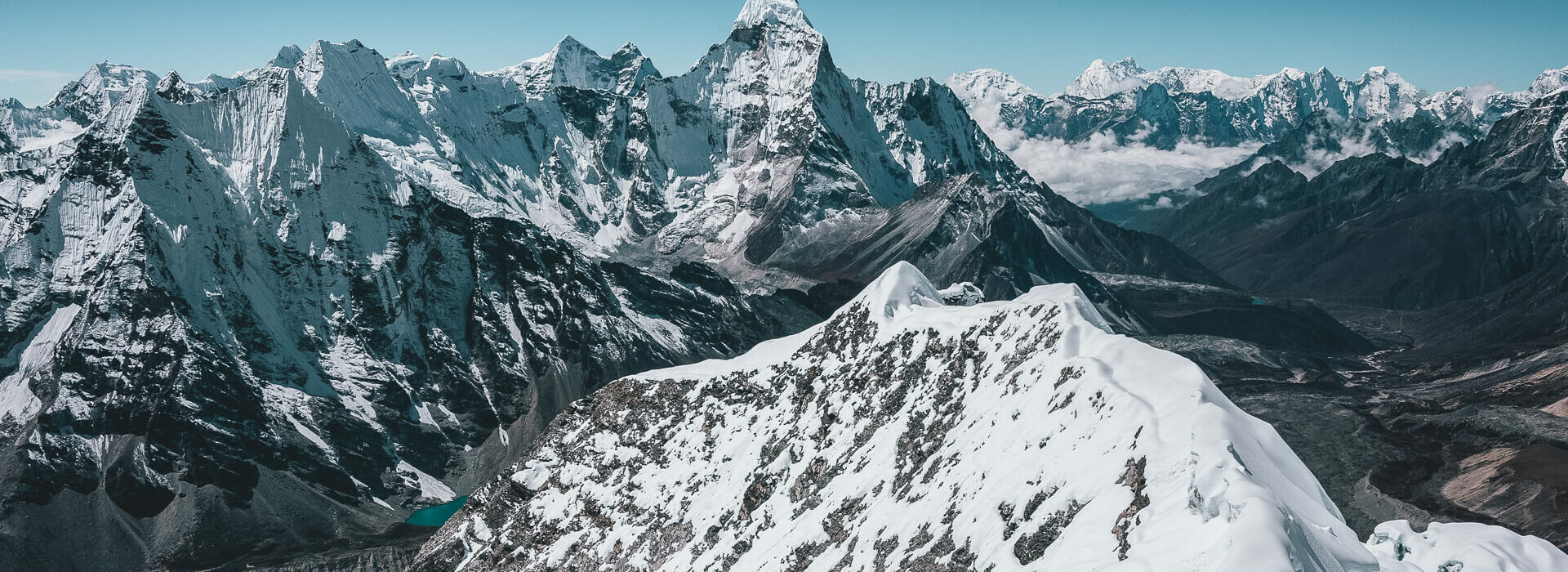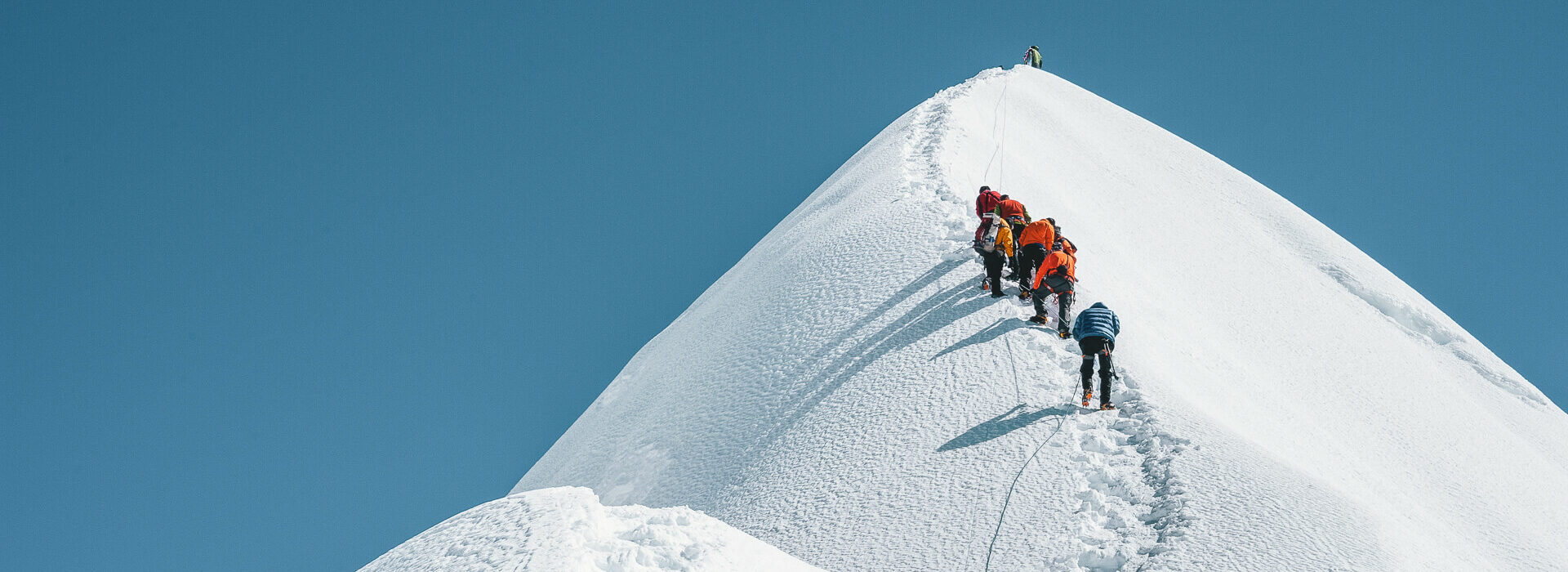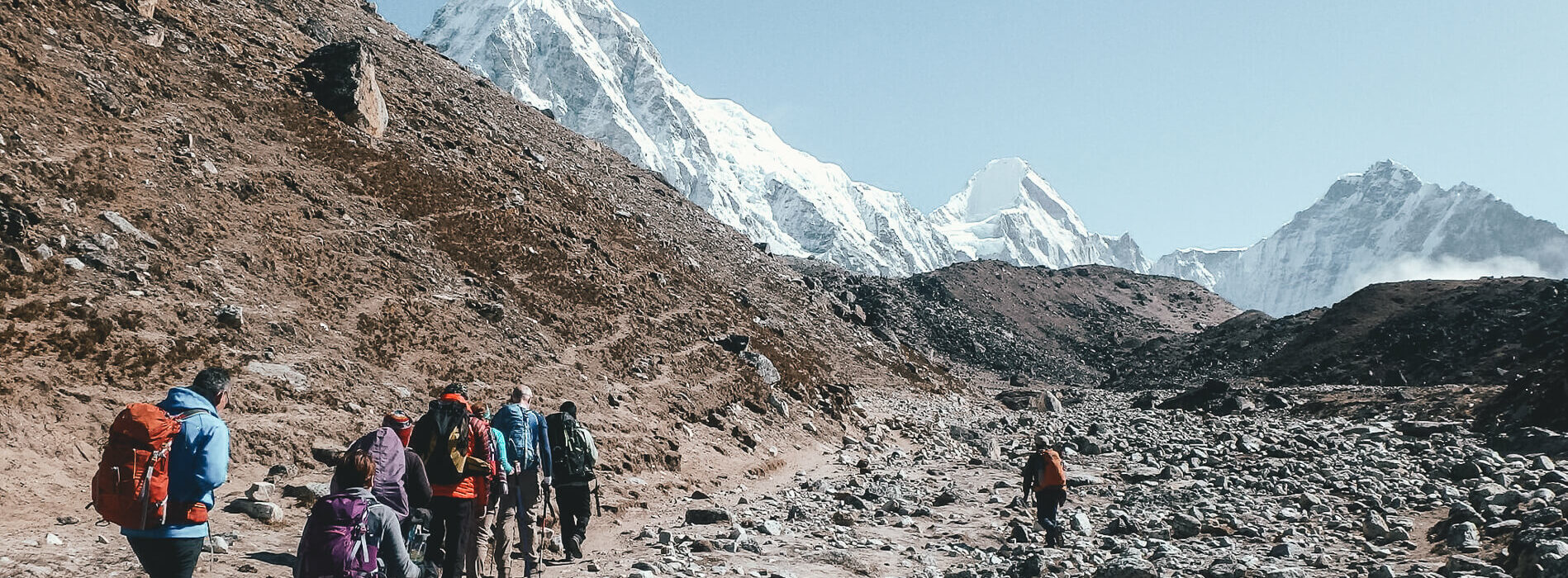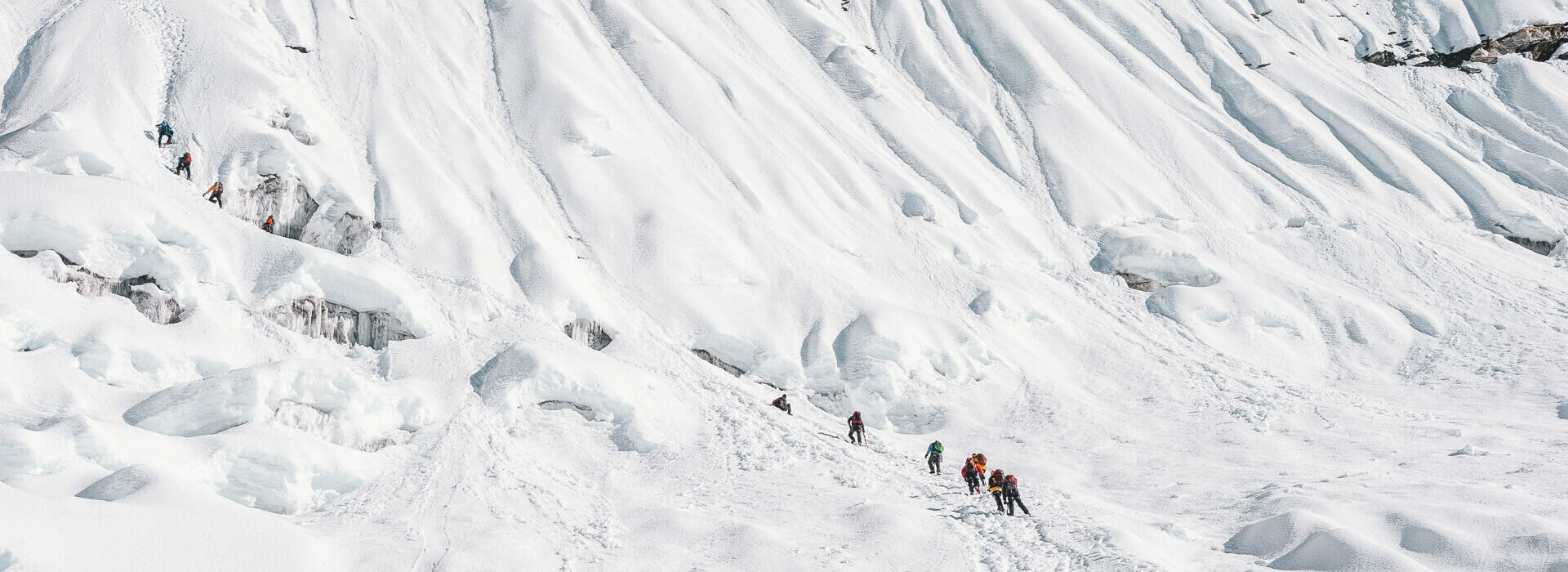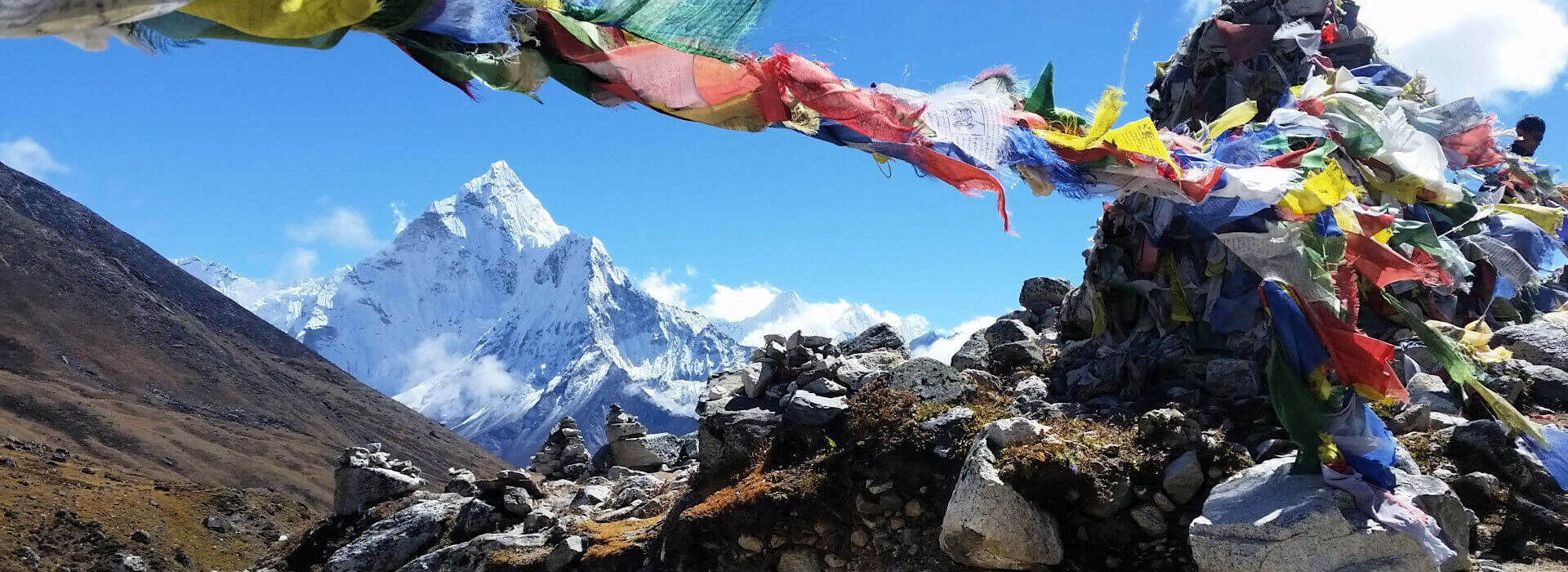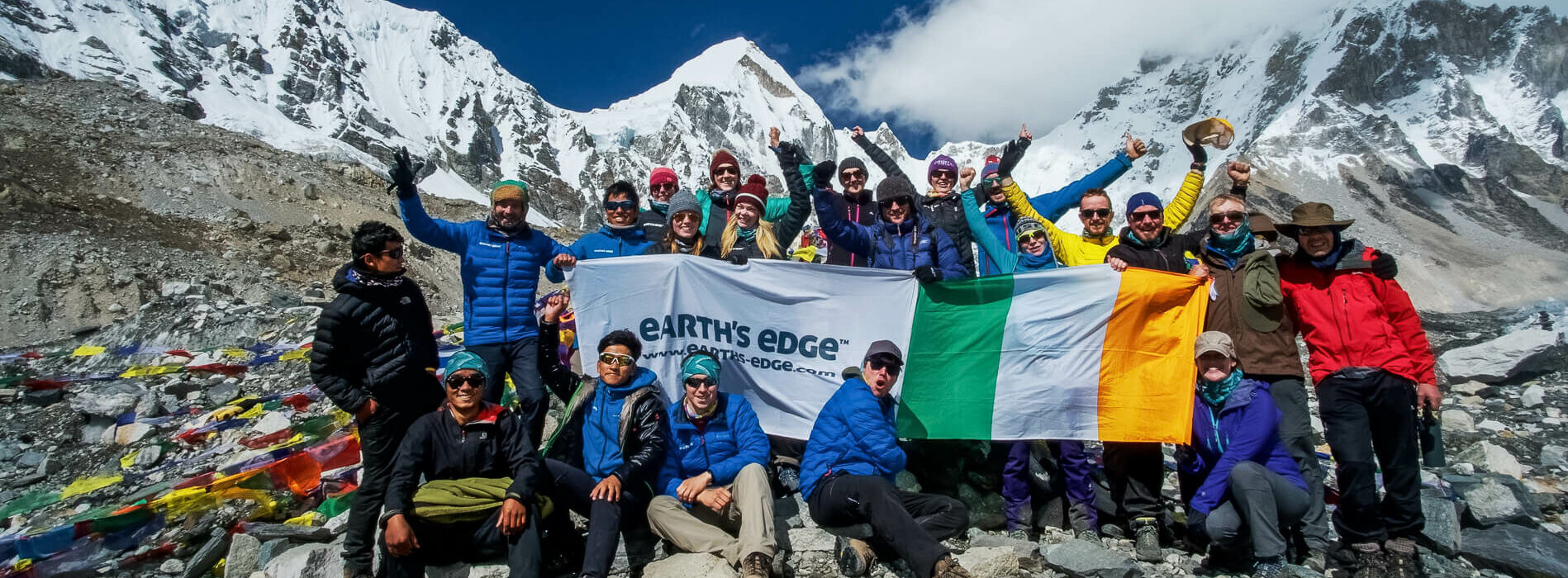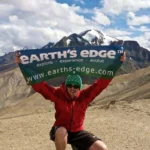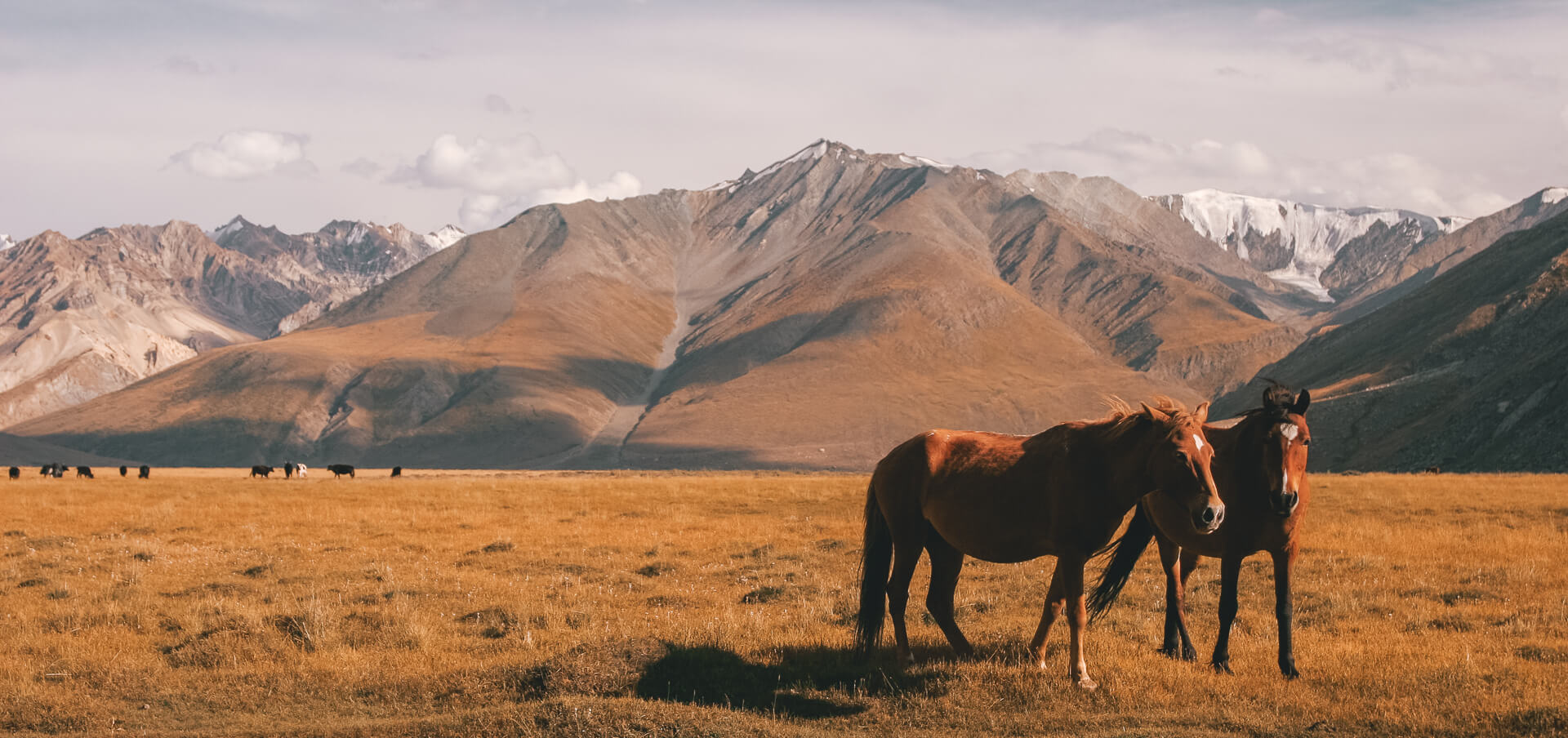Overview
We are the only company in the world who have an expedition leader and doctor on all Island Peak (6,189m) & Everest Base Camp (5,364m) expeditions while keeping group sizes sustainably small. Established in 2007, we offer high-altitude trekking and mountaineering in some of the most breathtaking locations around the world.
Trekking Island Peak & Everest Base Camp
Our 21-day itinerary first takes you on the historic trek through the Khumbu Valley to Everest Base Camp offering the best possible acclimatisation profile before we turn our attention to Island Peak. We move upwards through the valley at a slow, steady pace taking the time to meet the locals in the villages we pass and absorb the sights and scents of traditional Nepalese life. Each night we stay in locally run tea houses, enjoying the warm welcome of our hosts and the inviting heat of the stove as we remove our boots after a long day’s trekking.
We spend 8 days trekking to Everest Base Camp before we begin our ascent of Island Peak. Climbing Island Peak has since been used by many mountaineers as a preparation peak before summiting Everest.
It is frequently referred to as a trekking peak, however, the demands of a long summit night, much of which is spent on snow and ice using crampons and ice axes make this a tough challenge! We start in darkness in the early hours of the morning and ascend over 1100m over mixed terrain. The last 200m are the most demanding and we use fixed ropes and ascenders to conquer the headwall and reach the summit ridge. The panoramic views of the 7,000m and 8,000m peaks surrounding you at the top make all the hard work worthwhile!
You will come away from this trek with a great appreciation of the Sherpa way of life, getting the opportunity to experience their unique mountain culture and traditions. We also spend time in Nepal’s main city – Kathmandu. This bustling city is a melting-pot of ethnicities and a great contrast to the relaxed pace of life in the mountains.
Want to learn even more? You can watch our Island Peak & Everest Base Camp vlog here!
Island Peak & Everest Base Camp Expedition Costs & What’s Included
The total cost of trekking Island Peak & Everest Base Camp is highlighted above. You are required to pay a €399 deposit to secure your spot. A part payment of €1,000 is due six months prior to departure. You can pay the remaining balance by instalments or in full. All fees must be paid three months prior to departure.
Your fees include the following:
- Internal flights in Nepal
- Experienced expedition leader
- Experienced expedition doctor
- Training Weekend
- Earth’s Edge team of guides, cooks and support team
- All accommodation based on twin sharing in hotels in Kathmandu and in guest houses elsewhere
- All meals and drinking water except in Kathmandu and Ramechhap where accommodation is based on B&B
- A celebratory dinner
- All transport throughout the expedition
- All group gear consisting of first aid kits, mountaineering equipment, cooking equipment etc.
Flights
Please consult us before booking your flights to ensure you arrive in time for the expedition briefing on the first day. It’s essential you do not miss this meeting.
Read our Island Peak & Everest Base Camp blogs
Do you fancy having more information on this expedition? We have lots of extra insight into our Island Peak trips on the blog.
Itinerary
Day 2
Arrive in Kathmandu.
↓
Arrive in Kathmandu in time for a full expedition briefing. Overnight hotel.
Day 3
Transfer to Ramechhap. Fly to Lukla, trek to Phakding (2,610m), 3 hrs trekking.
↓
Transfer to Ramechhap in the early morning. Fly to Lukla and trek to Phakding.
Day 4
Trek Phakding to Namche Bazaar (3,450m), 8 hrs.
↓
Trek along the Dudh Kosi River and then through pine forest to reach Namche Bazaar.
Day 5
Acclimatisation Day.
↓
A full day for acclimatisation at Namche Bazaar including a shorter hike. Explore the village market and surrounding area.
Day 6
Trek Namche Bazaar to Phortse (3,840m), 5 hrs.
↓
Enjoy a scenic walk to Phortse with stunning views of Ama Dablam.
Day 7
Phortse to Pheriche (4,371m), 6 hrs.
↓
Another stunning day on the trail today which offers views of Everest if the weather is clear.
Day 10
Trek Lobuche to Everest Base Camp to Gorakshep (5,140m), 9 hrs.
↓
Trek to Everest Base Camp (5,364m) before descending to Gorakshep.
Day 11
Trek Gorakshep to Kala Patthar (5,550m) to Pheriche (4,371m), 10 hrs.
↓
An optional trek to Kala Patthar in the early morning is followed by a long walk out to Pheriche.
Day 12
Pheriche to Chhukung (4,700m), 4hrs.
↓
Today we leave the main Everest Base Camp trail and trek to Chhukung.
Day 14
Chhukung to Island Peak Base Camp (5,090m), 3hrs.
↓
After a skills session in the morning, we ascend to Island Peak Base Camp.
Day 15
Summit Day! Island Peak (6,189m), 17 hrs.
↓
We climb to the summit of Island Peak and then descend back to the warmth of the teahouse in Chhukung.
Day 18
Trek Tengboche to Namche Bazaar (3,450m), 4 hrs.
↓
Descend all the way back to Namche Bazaar.
Day 21
Lukla to Ramechhap, transfer to Kathmandu.
↓
Fly back to Ramechhap in the morning and transfer back to Kathmandu. Enjoy a special celebratory meal in the evening.
Facts
In 1856, the mountain was named after George Everest, a retired Surveyor General who never even saw the peak. The oldest person to reach the summit of Everest is Yuichiro Miura (80 yrs old) of Japan in 2013 and the youngest person is Jordan Romero (13 yrs old) of The USA in 2014.
The mountainous north of Nepal is home to eight of the world's ten tallest mountains, including the highest point on Earth, Mount Everest. It is also home to more than 240 peaks over 6,000 metres above sea level.
People of the Khumbu region are called Sherpas who have adapted to living in high altitude conditions for generations. Sherpas are key sources of climbing expertise, advice and help. Most Sherpas under the age of 50 tend to have a good level of English.
Best time to trek to Island Peak & Everest Base Camp?
The best time to attempt your Mount Everest Base Camp trek is in March through to mid-May and September through to mid-November. Summer months are considered too wet for climbing and Everest views are likely to be obscured by low clouds and fog.
The temperature at the summit never rises above freezing, averaging -36C in winter and -19C in summer.
What you need to trek Island Peak & Everest Base Camp?
We have an extensive packing list on what you should bring with you when trekking Island Peak & Everest Base Camp.
How to prepare to trek Island Peak & Everest Base Camp
We have classified Island Peak & Everest Base Camp as a level 7 expedition. With an average of six hours of walking per day, except on the days either side of base camp and the day we summit Island Peak which involve roughly 14 hours of trekking. We recommend people have some experience of scrambling and abseiling. This is a relatively long trek and good stamina is essential. It is your responsibility to contact us if you have any concerns regarding your level of fitness, health or ability to complete the trek. We strongly recommend that you read the expedition itinerary in full before signing up to this challenge.
 Certified B-Corp
Certified B-Corp
Earth's Edge is a certified B-Corp. In fact, we are the highest scoring B-Corp in Ireland. We are passionate about sustainable travel, bettering the lives of the people connected with the company and minimising our environmental impact.
 Tree Planting
Tree Planting
We plant 8 native trees in Nepal for each person that travels with us in partnership with Eden Reforestation Projects. If you would like to plant more, please contact info@earths-edge.com. Each extra tree costs €0.75 cents. Learn more about our tree planting here.
